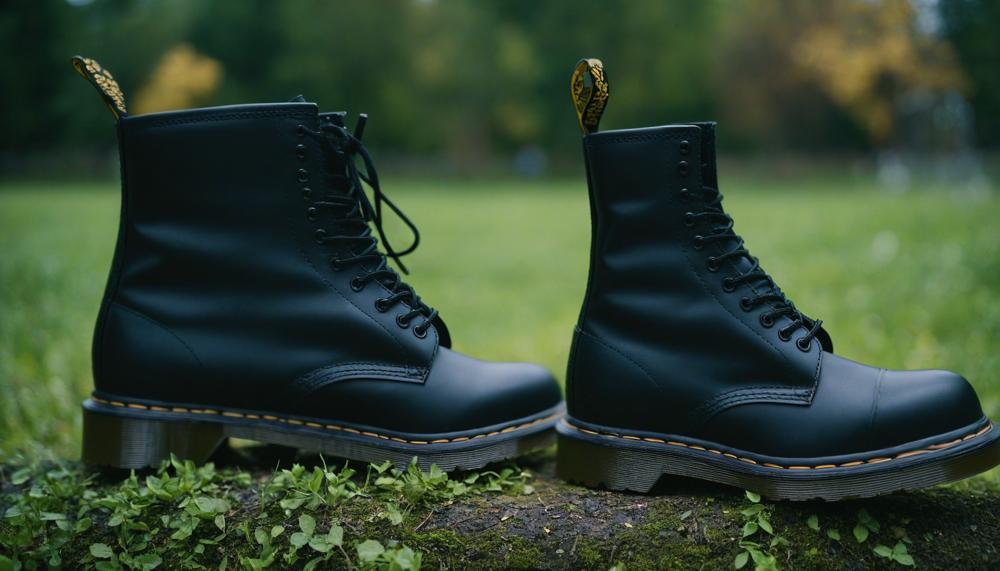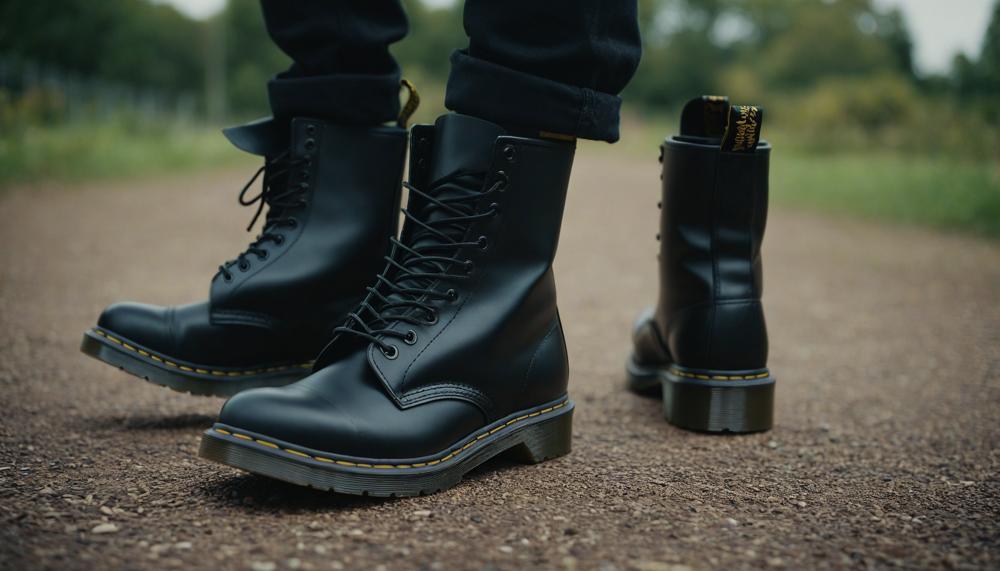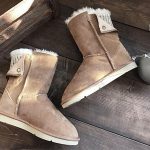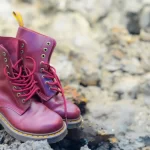Choosing the perfect pair of Doc Martens can feel like a quest for comfort and style, especially when it comes to sizing. Known for their iconic durability and distinctive design, getting the right fit in your Docs is crucial to enjoy their full potential.
Here’s what you need to know to sidestep the common pitfalls and stride confidently in your new boots:
- True to Size? Mostly: Generally, Doc Martens fit true to size. However, their flagship classic boots are an exception, often fitting a bit larger.
- Half-Size Hesitations: If you find yourself between sizes, it’s usually better to size down. For a snugger fit, especially in classic models, thick socks can be your best friend.
- Try Before You Buy: Whenever possible, trying them on in-store helps prevent surprises. If buying online, measuring your feet at home is a solid substitute to ensure you order the right size.
- Material Matters: Vegan options not only fit true to size but also tend to be more forgiving during the break-in period compared to their leather counterparts.
- Special Styles Specifics: Specific styles such as the Jadon run slightly large, while Chelsea Boots generally adhere to size expectations unless you opt to size up from a half-size.
Armed with these tips and a glance at the Dr Martens sizing chart, you’re set to select a pair that promises comfort right from the start. Remember, a little room for thick socks can enhance the breaking-in process, leading to a fit that feels custom-made.
Why It’s Hard to Find the Correct Dr. Martens Size
Contents
Identifying the proper fit for Dr. Martens can be a conundrum due to several key factors:

- Variation Across Styles: Dr. Martens boots are not uniform in sizing across different styles. For instance, the iconic 1460 boots and the platform Jadon boots may fit differently, affecting how one chooses their size.
- Leather Stiffness: The quintessential thick and rigid leather of Dr. Martens boots, especially when new, can make the shoes feel unusually snug. This often misleads wearers about the right size, as the leather will eventually soften and conform to the foot’s shape.
- Sizing Options: Dr. Martens typically offers whole sizes only. This poses a challenge for those who fall between sizes, making it hard to find an ideal fit without resorting to adjustments like thicker socks or insoles.
- Break-in Period: The break-in period for leather Dr. Martens can vary, during which the fit might change as the leather stretches. This makes initial sizing decisions tougher, as the boots might initially feel too tight but later loosen.
- Inconsistencies in Manufacturing: Subtle variations in manufacturing can lead to slight differences in sizing even within the same model, requiring sometimes to try on multiple pairs in the same size to find the best fit.
The following table outlines advice based on common Dr. Martens styles:
| Style | Typical Fit | Advice |
| 1460 Boots | True to size but stiff | Consider thick socks for break-in period |
| Jadon | Runs slightly big | Size down if in-between sizes |
| Chelsea Boots | Can run big | True to size or size down for in-betweens |
Doc Martens 1460 Sizing
When sizing your Doc Martens 1460 boots, a combination of precise foot measurement, sock thickness, arch type, in-store trial, break-in consideration, toe box space, and UK size conversion should guide your decision. Here’s a detailed guide to help you pick the right size:
- Foot Measurement: Begin by accurately measuring your foot length from heel to toe. Use the Doc Martens size chart to find the best match for your foot measurements.
- Sock Consideration: The socks you plan to wear significantly affect the fit. Thick socks necessitate a larger size, while thinner socks might allow you to opt for a snugger fit.
- Arch Support: Choose boots that accommodate your arch type—standard, high, or low. Incorrect arch support can lead to discomfort.
- In-Store Trial: Whenever possible, try the boots on. Walk around to ensure there’s no pinching or excessive space.
- Break-In Period: These boots need breaking in. They might feel stiff initially but will stretch and mold to your feet. Consider this when selecting a size, ensuring they are snug but not overly tight.
- Toe Box Space: Doc Martens 1460 boots offer a roomy toe box. Ensure there’s enough room to wiggle your toes without the fit being too loose.
- UK Size Conversion: Familiarize yourself with UK sizing as Doc Martens sizes are listed in UK measurements. This might differ from your usual shoe size.
Dr. Martens Sandals Sizing
To find the right size for Dr. Martens sandals, follow these expert tips:
- Understand Sizing Variations: Dr. Martens sandals differ in sizing between men’s and women’s styles, with specific adjustments needed due to their unique fit.
- Size Down for Better Fit: Typically, Dr. Martens footwear runs larger than standard sizes. It’s recommended to go down 1-2 sizes from your regular shoe size for a comfortable fit.
- Consult the Size Chart: Utilise the comprehensive size chart from Dr. Martens, which converts sizes across US, UK, EU, and centimetres (CM). This helps ensure accuracy in selecting the right size for your sandals.
- Consider Individual Fit: Personal fit preferences may vary. Trying on the sandals is advisable to gauge how they feel on your feet.
- Wide Feet Considerations: If you have wider feet, opt for a larger size or choose styles designed to accommodate wider fits.
- Special Considerations for Women’s Styles: Women’s Dr. Martens sandals often run smaller than usual, necessitating a decrease of 1-2 sizes from your regular shoe size.
- Snug Fit Advice: Due to their sturdy construction, Dr. Martens sandals may initially feel firm. Sizing down can provide a snug yet comfortable fit once broken in.
Do Dr. Martens Fit Wide Feet?
Dr. Martens are suitable for people with wide feet. Their designs typically feature a spacious toe box and a comfortable fit that accommodates broader foot shapes. This makes them a popular choice among individuals looking for stylish footwear without sacrificing comfort. Whether you opt for the classic 1460 boots or the platform-soled Jadon styles, Dr. Martens offer options that cater to various foot widths.
To elaborate, Dr. Martens’ reputation for durability and support extends to their consideration for foot size diversity. Their shoes often provide ample room across the forefoot and midfoot, ensuring a snug yet comfortable feel for wider feet. This is supported by their range of styles, such as the Chelsea boots and their iconic 1460 series, which are designed with wider dimensions in mind.
For those with specific concerns about fit, trying on different styles and sizes can help determine the best match. Additionally, consulting size guides and customer reviews can provide further insights into which Dr. Martens styles might be most suitable for wider feet.
| Pros | Cons | Summary |
| Spacious toe box | May require breaking in | Dr. Martens are a solid choice for wide feet, offering both comfort and style. |
| Great arch support | ||
| Various styles available |
| Step | Guidance |
| 1. | Convert your US size to UK size (e.g., US 8 = UK 6). |
| 2. | Size down by at least one full size (e.g., US 8 = UK 5). |
| 3. | Try them on with thick socks to ensure proper fit. |
| 4. | Adjust based on your foot width (size down for narrow feet, size up for wide feet). |
Finding the perfect size in women’s Doc Martens involves understanding UK sizing, adjusting for their larger fit, and considering your sock choice and foot width.
Dr. Martens Size Chart
When selecting Dr. Martens footwear, it’s crucial to note that these iconic boots and shoes often fit larger than your usual shoe size. To ensure a snug and comfortable fit, particularly if you’re a first-time buyer, here’s a straightforward guide based on the Dr. Martens Size Chart.
If you’re accustomed to US sizing, consider sizing down for Dr. Martens. Women’s styles are notably different; they tend to run a whole size smaller than men’s. This means if you usually wear a US women’s size 9, you would likely fit into a Dr. Martens size It’s also recommended to try them on with thicker socks, as traditionally done by loyal fans of the brand, to account for some of the spacious interior.
Below is a handy table illustrating how to convert your typical US shoe size to the appropriate Dr. Martens size:
| Your US Size (Women’s) | Your US Size (Men’s) | Dr. Martens UK Size |
| 9 | 8 | 7 |
| 10 | 9 | 8 |
| 11 | 10 | 9 |
Remember, the key to a perfect fit in your Docs is not just about size but also the break-in period. New Dr. Martens can feel stiff at first; wearing them in gradually will allow the leather to mold to the shape of your foot, ensuring the boots become more comfortable with each wear.
Conclusion
Navigating the nuances of Doc Martens sizing can transform the iconic footwear from merely durable to distinctly comfortable and stylish. Consider these streamlined insights: most styles fit true to size, though classic models like the 1460 boots may need thicker socks during the break-in period for a more tailored fit. If you’re caught in a half-size dilemma, sizing down is your best bet, especially for snugger styles.
The materials also play a significant role in your sizing strategy. Vegan Docs offer a gentler break-in experience, adapting more quickly to your foot shape, whereas traditional leather options evolve in comfort as they mold to your feet over time. Whether you’re opting for the street-style favorite Jadon or the sleek Chelsea boots, understanding the unique fit of each style enhances your chances of a perfect match.
Before stepping into your new Docs, measure your feet carefully and consult the Dr. Martens sizing chart. Whenever possible, test walking in them at a store to gauge their initial comfort.






